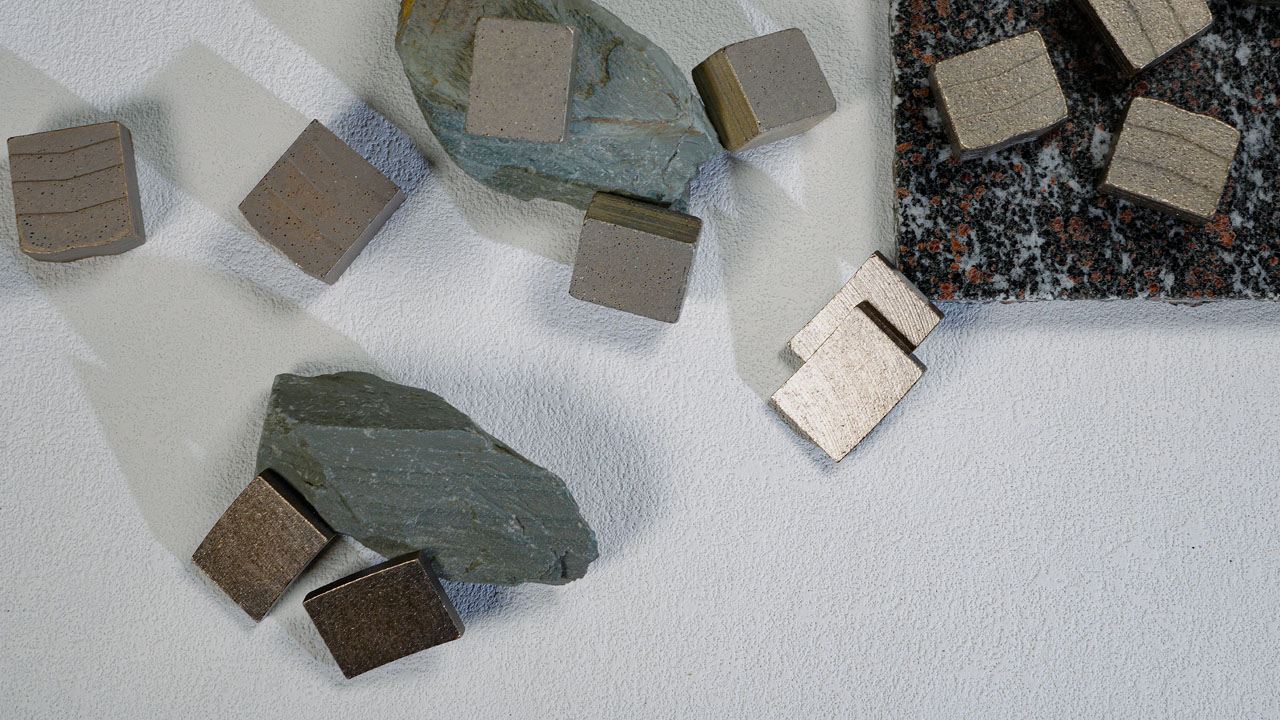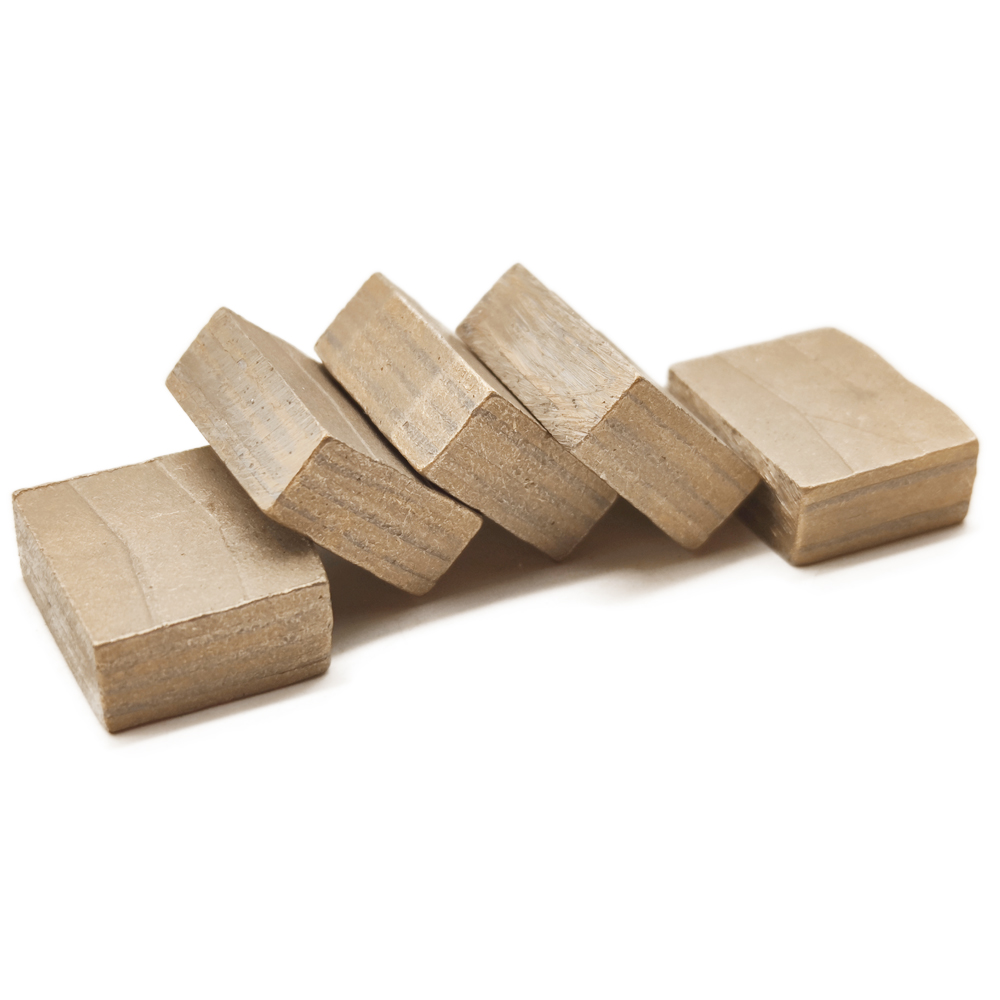What are the colors of the diamond segment?
The color of the diamond segment is usually gray or silver. This is because the color of diamond itself is colorless and transparent, but it is often necessary to add metal powder or other materials to increase its strength and hardness during processing, resulting in a gray or silver color on the surface of the segment. In addition, some special-purpose diamond segments may be treated with surface coatings, such as titanium coatings, nitride coatings, etc., to present different colors. But these colors will not affect the performance and quality of the diamond segment.

Why do diamond segments show different colors?
Diamond segments will show different colors, mainly due to the different raw materials and production processes used in the preparation of diamond particles. In the process of preparing diamond segments, the commonly used diamond particle raw materials include natural diamond, synthetic diamond, silicon carbide, aluminum oxide, etc. The difference in these raw materials will cause the color of the diamond segment to be different.
In addition, diamond segment color can also be affected by surface treatment. For example, coating a layer of metal or nitride film on the surface of the diamond segment may also affect its color. Diamond segments of different colors have their unique advantages in different applications.
What color is the copper bond segment? Why is this happening?
Copper bond diamond segments are usually gray or silver-gray. This is because the metal powder such as copper powder added to the copper bond segment will reflect light, making the overall color of the segment appear gray or silver-gray. In addition, the color and particle size of the diamond in the copper bond segment will also affect its overall color, for example, the larger the diamond particles, the more conspicuous the color may be.
What color is the metal bond blade? Why is this happening?
Metal bond diamond segments usually appear gray or silver-gray, which is due to the color of the metal bond alloy itself and the size and distribution of the diamond particles. Metal bond alloys are generally darker in color, while the size and distribution of diamond particles affect the reflection and refraction of light, and therefore the color of the entire segment. In addition, there may be other metal elements contained in the metal bond segment, which will also affect the color.
What do the different colors of the diamond segment represent?
The different colors of the diamond segment represent different uses and process characteristics. Generally speaking, the color of diamond segment can be divided into the following categories:

Blue: Blue diamond segments are usually used for cutting hard materials, such as ceramics, glass, gemstones, etc. This type of segment has high hardness and toughness, which is suitable for high-speed and efficient cutting.
Red: Red diamond segments are usually used for cutting softer materials such as marble, limestone, etc. This type of segment has low hardness and toughness, but relatively long life, suitable for long-term cutting operations.
Yellow: Yellow diamond segments are usually used for cutting medium-hard materials, such as granite, quartz, etc. With moderate hardness and toughness, this segment is suitable for cutting a variety of materials.
Green: Green diamond segments are usually used for grinding and polishing metal and non-metal materials, such as glass, ceramics, etc. This segment has high wear resistance and thermal stability, and is suitable for high-intensity grinding and polishing operations.
It should be noted that the color of diamond segments produced by different manufacturers may be different, so there is no absolute difference in hardness and toughness between different colors, and the specific use needs to be selected according to the specific situation.
How is the blue segment formed?
Blue diamond segments are usually formed by adding a small amount of boron, usually cobalt boride, during a high temperature, high pressure process. Under the environment of high temperature and high pressure, boron can chemically react with diamond, causing the structure of diamond to change, thus forming blue diamond crystals. Compared with traditional colorless diamonds, blue diamond segments generally have higher hardness and wear resistance, so they are widely used in the manufacture of high-end cutting tools.
How is the red segment formed?
During the processing of the diamond segment, if the process of high temperature or high pressure is used, red color may appear. The red diamond segment is due to the iron element contained in it. After high temperature and high pressure treatment, the iron element and carbon element combine to form a red diamond crystal. This kind of red diamond segment has higher hardness and strength than other color segments, so it will be used in some special processing occasions.
How is the yellow segment formed?
Yellow diamond segments are usually achieved by adding magnesium metal or compounds of other metallic elements during the manufacturing process. These additives can affect the diamond’s growth process and crystal structure, resulting in its yellow color.
How is the green segment formed?
The green diamond segment is usually formed by doping a certain amount of nitrogen, boron and other elements when artificially synthesizing diamond. The incorporation of these elements can change the lattice structure of diamond crystals, thereby changing the optical properties of diamond crystals and presenting a green color. In addition, during the growth process of the diamond crystal, it may also form a composite substance with other substances, resulting in a change in the color of the crystal, forming a green diamond segment.
How is the silver-white segment formed?
The silver-white diamond segment is due to the coating, which is usually achieved by plating a layer of metal (such as nickel, titanium, chromium, etc.) on the surface of the segment. This coating can not only increase the hardness and wear resistance of the diamond segment, but also improve the bonding strength between the diamond and the substrate. The thickness of the coating can be adjusted according to different needs, so the color of the silver-white diamond segment may vary slightly due to the thickness of the coating and the material.





